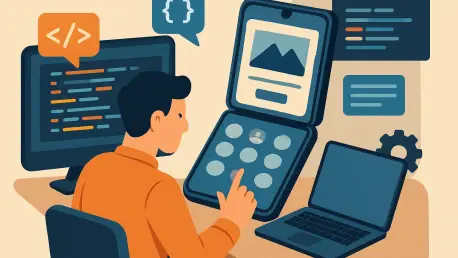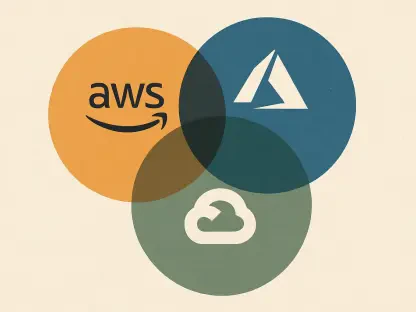In a world where sleek smartphones are often the focal point of mobile technology discussions, Vijay Raina brings a fresh perspective by emphasizing the continued relevance and potential of developing applications for feature phones, particularly flip phones. With expertise spanning enterprise SaaS and software design, Vijay helps us understand why these seemingly outdated devices hold a strategic place in the global mobile landscape.
Can you explain why flip phones still have a significant market presence in 2025 despite the prevalence of smartphones?
Absolutely. It’s fascinating that despite the dominance of smartphones, flip phones continue to find a substantial market. We’re talking about over 200 million flip phones sold annually, which matches the scale of iPhone sales. Primarily, their affordability and ruggedness appeal to users in regions like South Asia and Africa, where high-end smartphones are often financially out of reach. Additionally, the ongoing 2G network transitions in many areas create a demand for budget-friendly devices that can support newer networks like 4G, making flip phones an attractive option.
What are some key features that modern flip phones offer that were not available in earlier models?
Modern flip phones, often referred to as feature phones, have made significant strides in terms of functionality. Unlike their predecessors, these phones often come equipped with technologies such as 4G, WiFi, and Bluetooth. They can also run web-based applications, bringing them closer to what users might expect from a basic smartphone. This blend of old and new appeals to first-time internet users looking for an accessible entry into the digital world.
In which regions are flip phones particularly popular, and what economic factors contribute to their popularity in these regions?
Flip phones maintain strong popularity in regions like South Asia and parts of Africa. The core economic factor driving their prevalence is affordability. In these regions, the average income makes high-end smartphones, such as iPhones, a luxury. It often takes months of wages to afford such a device. In contrast, flip phones offer essential connectivity without significant financial strain, further bolstered by incentives from network operators aiming to upgrade users from 2G to 4G.
Why should developers consider building apps for flip phones?
Building apps for flip phones presents unique opportunities. Firstly, there’s significant organic growth potential. You don’t incur the hefty costs associated with acquiring users in more saturated markets like iOS or Android. Plus, when flip phone users transition to smartphones, they often search for familiar apps, which can increase brand presence across larger platforms. With fewer apps to compete against—around 1,700 on KaiOS compared to millions on Google Play—it’s easier for an app to stand out and capture user interest.
How does the cost of acquiring users for flip phone apps compare to that for Android or iOS apps?
The cost of acquiring users on flip phone platforms is notably lower than on iOS or Android. The latter two platforms average a cost per install of about $2.5 to $3.3, whereas flip phone apps benefit from substantial organic downloads. This is largely due to lower market saturation and a more straightforward acquisition path, often stemming from word-of-mouth and simple discoverability on less crowded app platforms.
What technical foundations support app development for flip phones, and how do they differ from past methods?
Previously, developing for flip phones involved the complex and fragmented Java 2 Mobile Edition (J2ME) runtime. Today, we see a shift towards standard web technologies like HTML, CSS, and JavaScript. This movement simplifies the entry barrier for developers familiar with these widely-used languages. The modern platforms—KaiOS, Opera Mini, and Cloud Phone—all employ these technologies, making the development process similar to creating Progressive Web Apps.
Can you describe the typical hardware used in flip phones and how it impacts app performance?
Flip phones leverage accessible, cost-effective hardware, ranging from minimal setups with as little as 16MB of RAM to more capable configurations with newer chipsets and increased RAM. This hardware, while affordable, imposes tight constraints on performance. Developers must be strategic, often optimizing applications by reducing code size, compressing image assets, and rigorously testing on actual devices to ensure smooth operation within these limits.
How do browsers like Opera Mini and Cloud Phone manage performance constraints on low-end flip phone hardware?
These browsers employ innovative techniques to address hardware limitations. For instance, Opera Mini and Cloud Phone offload intensive data processing to remote servers, which allows the browsing and app experience to remain smooth and efficient on devices with limited computational power. This server-side processing allows the client device to handle only the minimal requirements needed to display the end result, stretching the performance of these low-end devices considerably.
What design considerations should developers keep in mind when creating apps for flip phones?
Designing for flip phones means prioritizing simplicity over shrinking existing designs to fit. Developers should address the unique characteristics of small, low-resolution screens, which can differ significantly in brightness and pixel density. Successful designs avoid clutter and ensure all necessary information is visible without overwhelming the user. Clear, concise layouts with logical navigation paths improve usability and accessibility on these limited displays.
How do popular web frameworks like Bootstrap and Tailwind CSS fall short in addressing small screens properly?
Traditional frameworks like Bootstrap and Tailwind CSS often categorize small screens into a single catch-all size category, which doesn’t adequately address the specific needs of very small screens typical in flip phones. They generally lack the granular breakpoints required to tailor a layout to the nuances of these devices. Manually adding custom breakpoints or using tailored frameworks can better optimize visibility and usability for these smaller screens.
Can you elaborate on how small screen usability differs from just shrinking content to fit?
Usability on small screens isn’t just about fitting content into a reduced space. It’s about optimizing the experience for clarity and ease of interaction. Developers need to enhance navigability through succinct content presentation and intuitive controls. Elements should be designed to ensure they are clearly visible, easily interactable with minimal input, and that all interactions make the best use of the limited screen real estate available.
What is the importance of keyboard navigation in flip phone apps, and how does it compare to navigation on other devices?
Keyboard navigation is pivotal for flip phones, given that these devices come with physical keypads instead of touch interfaces. Users rely on the directional pad for navigating apps, similar to a TV remote. This necessitates design patterns that allow seamless movement across elements without touch input—a marked contrast to the directness of navigation on smartphones or tablets using touch gestures.
How can developers minimize typing requirements for flip phone users to improve user experience?
Minimizing typing on flip phones can greatly enhance user experience since typing on these devices is cumbersome. Developers can opt for number-based inputs, like phone numbers or PIN codes, and incorporate mechanisms like single-sign-on options or voice search. Implementing these strategies reduces the strain of typing, simplifying the process of user engagement with the application.
What are the challenges associated with the fragmented ecosystem of flip phone browsers and operating systems?
The fragmented landscape of flip phone platforms poses significant development challenges. Each platform, whether it’s Cloud Phone, KaiOS, or Opera Mini, operates distinctively, accommodating various capabilities and standards. Developers need to adapt features to align with the limitations and strengths of each platform, often necessitating compromises or alterations to ensure compatibility and functionality across different systems.
How do Cloud Phone, KaiOS, and Opera Mini differ in terms of capabilities and the type of apps they support?
Each platform brings its unique set of capabilities and limitations. Cloud Phone leans on a modern Chromium browser, which supports rich multimedia and extensive capabilities but lacks offline features. KaiOS, conversely, allows low-level system integration and offline support, though its technology stack is more outdated. Opera Mini, widely available, uses older technology, limiting its support for modern features but offering pre-integrated solutions for widespread use. These differences dictate which types of applications are feasible on each platform.
What is the current size of the flip phone market, and how does it break down by platform?
The flip phone market remains substantial, with hundreds of millions of active units sold globally. KaiOS reportedly powers over 160 million devices, while Opera Mini boasts a user base exceeding 300 million. Meanwhile, Cloud Phone, despite being newer, is rapidly gaining traction with over a million users. These figures illustrate each platform’s distinct presence and growth trajectory, underscoring the varied needs and preferences across different user bases.
What is your forecast for the future of flip phones and their impact on the market?
As digital inclusion drives more users in emerging markets online, the market for flip phones will continue to grow, bridging the gap for those not yet ready or able to transition to full smartphones. They will play a crucial role in providing connectivity and introducing users to online ecosystems. Developers who tap into these ecosystems stand to create impactful solutions that cater to millions of potential first-time users.









